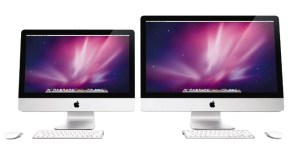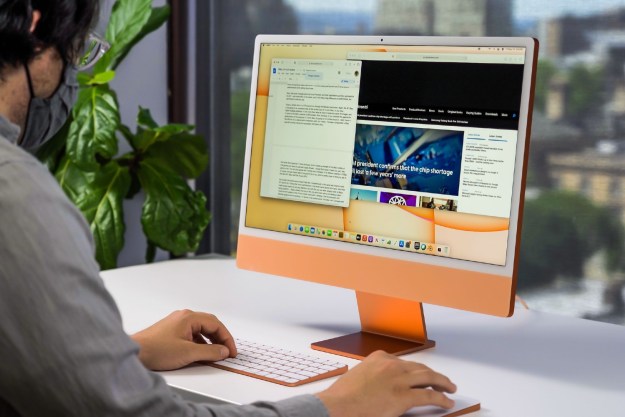 Just in time for the upcoming back-to-school season, Apple has given its iMac line its perennial update. Although the newest iMacs look identical to their older cousins, a bit of retooling under the hood leaves them faster and more capable than ever. Will you notice? Here’s a rundown of what’s new, and what it means to you.
Just in time for the upcoming back-to-school season, Apple has given its iMac line its perennial update. Although the newest iMacs look identical to their older cousins, a bit of retooling under the hood leaves them faster and more capable than ever. Will you notice? Here’s a rundown of what’s new, and what it means to you.
Core i3, i5 and i7 Processors
The trusty Intel Core 2 Duo and Core 2 Quad designations have disappeared in favor, appropriately enough, of Intel’s new i-branded Nehalemn-architecture chips. Although they share the same clock speeds, the new chips use a 32nm fabrication, which improves both performance and efficiency. Other technologies, including hyper threading and smart cache, should also improve performance, albeit incrementally.
ATI Radeon HD Graphics
Apple has jumped ship on the GeForce 9-series cards found in the last iMacs and switched to AMD’s Radeon HD cards. You’ll also notice no “mobility” or “M” designation tacked on there. These are the full-power desktop versions of the new cards, not the neutered notebook versions the last-generation iMac was using. Long story short: They should offer significantly improved gaming performance for folks hoping to install Bootcamp and get their Crysis on. Especially if you opt for the big-daddy Radeon HD 5750 with 1GB of onboard GDDR5 memory.
Support for dual hard drives
It used to be you could order an iMac with a standard magnetic drive, or a speedy solid-state drive. This time around, Apple has eliminated the either-or proposition with the option to equip your new iMac with both a 256GB solid-state drive and a conventional drive. Sound like overkill? For many users, it might be, but loading the operating system and certain programs onto the SSD can significantly improve load times, while a conventional drive keeps a terabyte or two handy for large video and music collections.
The Apple iMac continues to remain one of the most powerful all-in-one systems available. While it is not as upgradeable as a full on desktop system, Apple gives users the ability to upgrade most major components including hard drive and RAM. In our book, the new iMac gives users an experience worth paying for!
Editors' Recommendations
- Hurry! This iMac is at its cheapest ever price right now
- Mac Studio vs. iMac vs. Mac mini: don’t make a mistake
- A new iMac Pro could still launch. Here’s what I want from it
- Everything announced at Apple’s ‘Scary Fast’ event: iMac, M3, and more
- The M3 iMac is here, but it’s missing its most requested change


